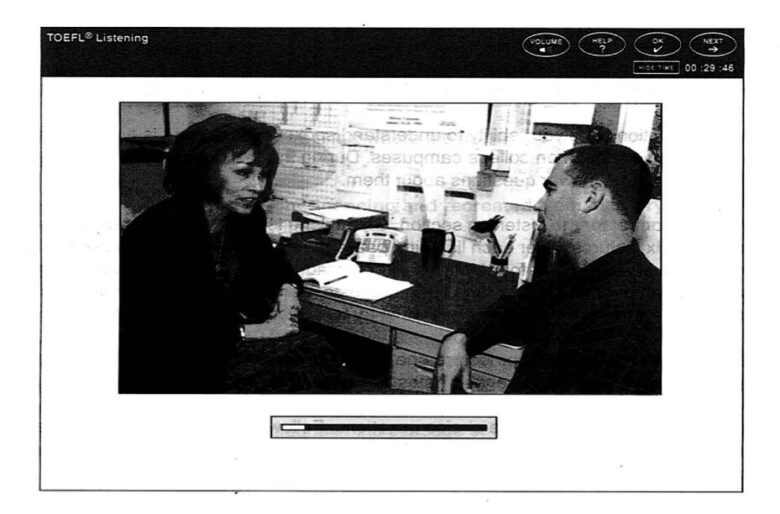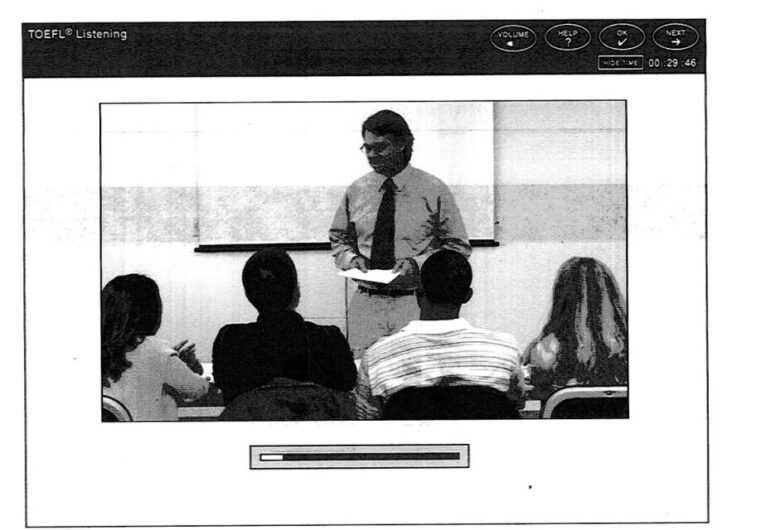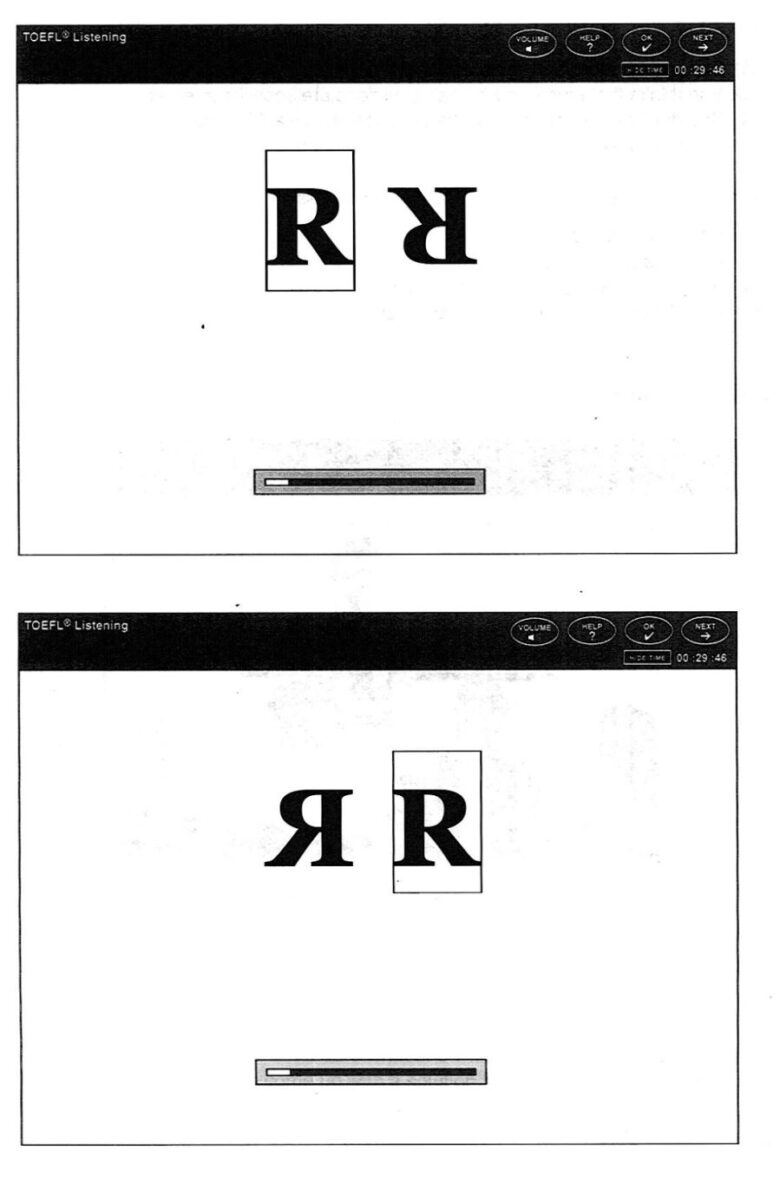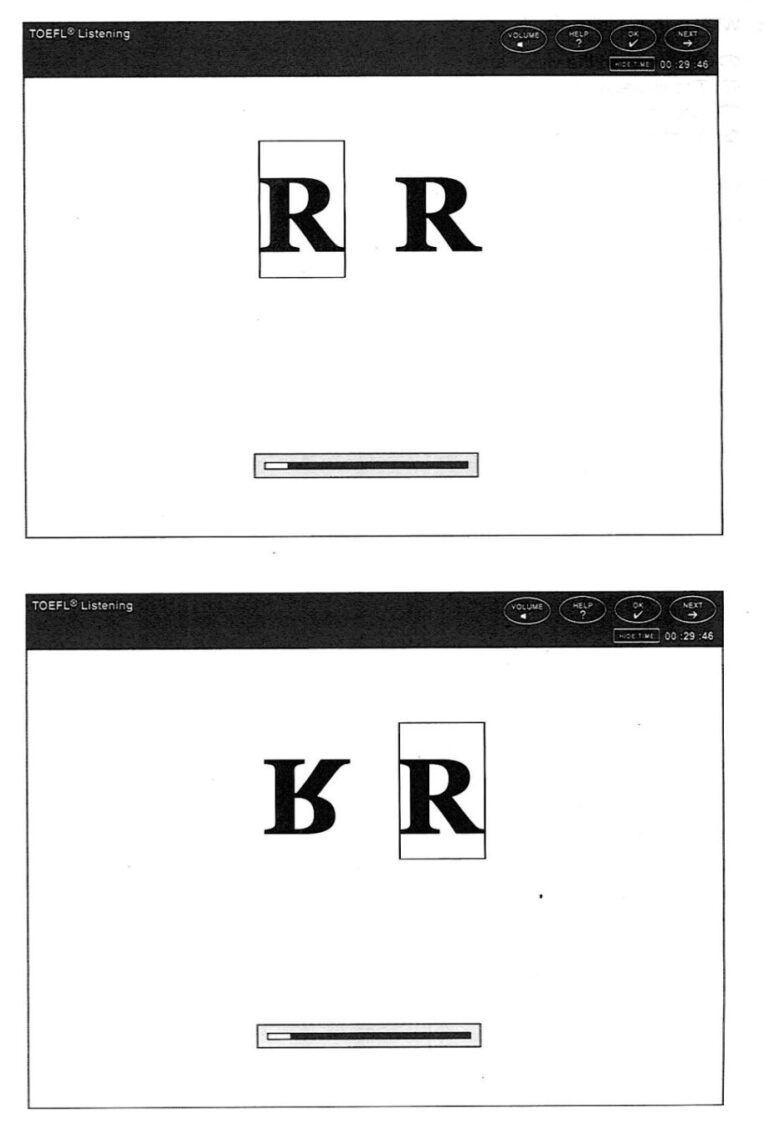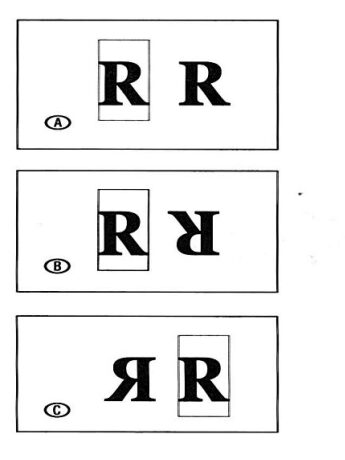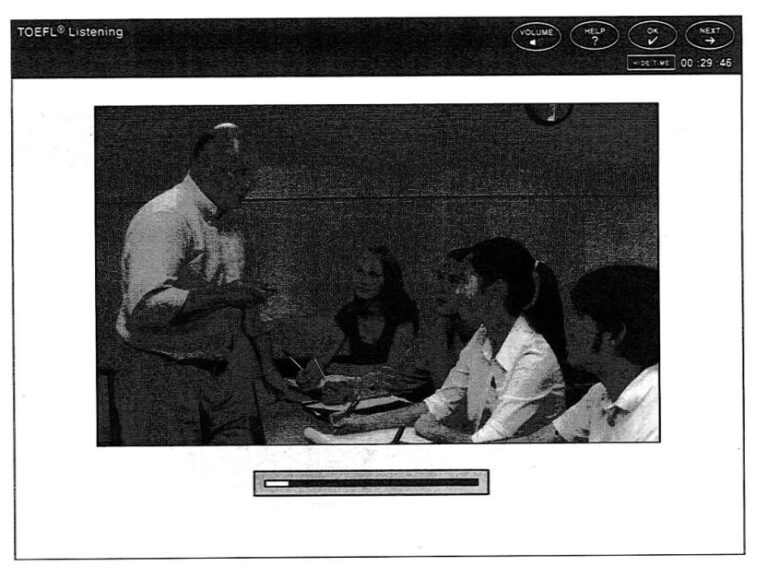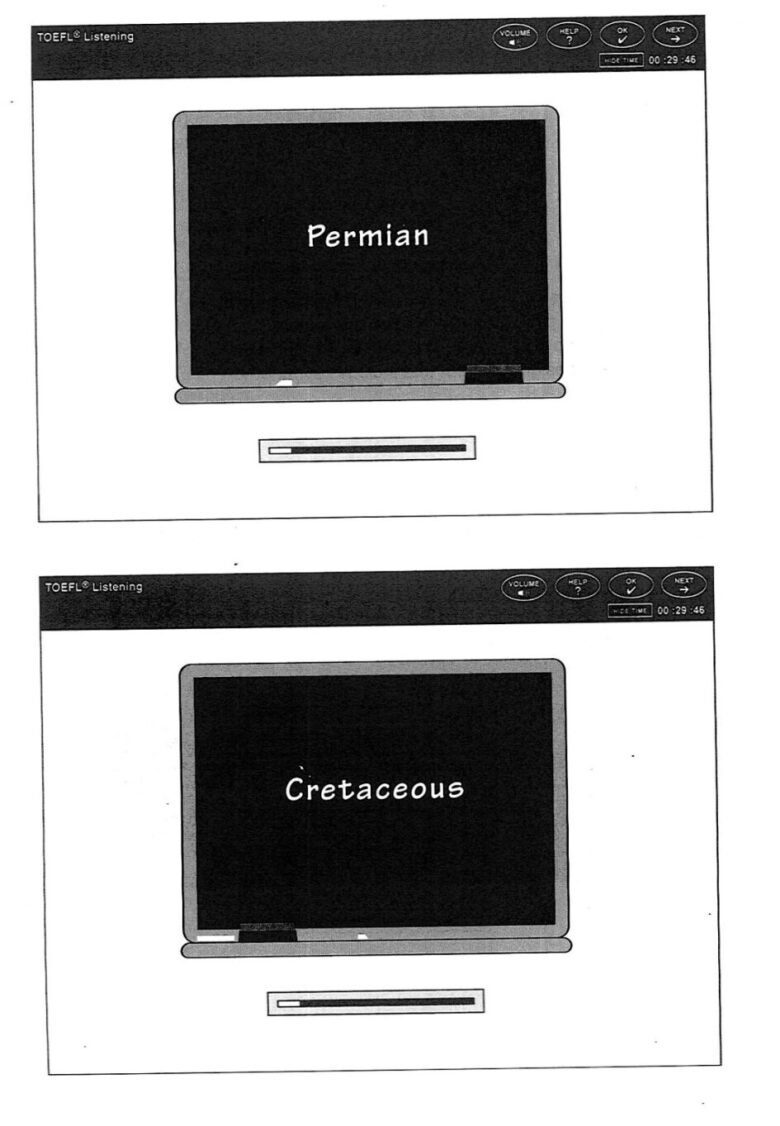TOEFL IBT Listening Practice Test 07 from Barron’s TOEFL iBT
The Listening section tests your ability to understand spoken English that is typical of interactions and academic speech on college campuses. During the test, you will listen to conversations and lectures and answer questions about them.
This is the short format for the Listening section. On the short format, you will listen to two conversations and four lectures. After each listening passage, you will answer 5-6 questions about it.
You will hear each conversation or lecture one time. You may take notes while you listen, but notes are not graded. You may use your notes to answer the questions.
Choose the best answer for multiple-choice questions. Follow the directions on the page or on the screen for computer-assisted questions. Click on Next and then on OK to go on to the next question. You cannot return to previous questions.
The Listening section is divided into sets. Each set includes one conversation and two lectures. You have 10 minutes to answer all of the questions for each set. You will have 20 minutes to answer all of the questions on the short format. A clock on the screen will show you how much time you have to complete your answers for the section. The clock does NOT count the time you are listening to the conversations and lectures.
TOEFL IBT Listening Practice Test 07 from Barron’s TOEFL iBT Audio Part 01
TOEFL IBT Listening Practice Test 07 from Barron’s TOEFL iBT Audio Part 02
Listening 1 ” Professor’s Office”
1. Why does the man go to see his professor?
CD He wants to withdraw from the class.
CD He needs to ask the professor a question.
CD His professor promised to give him a tape.
CD His professor asked him to come to the office
2. Why does the student say this:
CD He is disrespectful. CD He is surprised.
CD He is sorry.
CD He is happy.
3. What does the professor mean when she says this:
CD She is warning the student that she could take more serious action.
CD She is indicating that she is not sure what she wants to do.
CD She is asking the man to come up with a solution for the situation.
CD She is forgiving the man for causing a problem in her class.
4. How does the professor feel about questions in class?
CD She would rather answer questions during her office hours.
CD She thinks that students who ask questions are showing interest.
CD She does not like students to be disrespectful by asking questions.
CD She wants her students to help each other instead of asking questions.
5. What will the man probably do during the next class?
CD He will ask fewer questions.
CD He will tape record the lecture.
CD He will refer to the outline in the book.
CD He will participate more in the discussion.
——————————————————————–
Listening 2 “Art Class ”
6. What is this lecture mainly about?
A. Symmetry in the visual arts
B. The characteristics of patterns
C. How the brain organizes information
D. A definition of beauty
7. What does the professor mean when he says this:
A. He plans to give others an opportunity to speak.
B. He is talking too fast and intends to slow down.
C. He needs to correct something that he has said.
D. He wants to talk about that subject later.
8. Which of the following slides represents reflection symmetry?
Click on the correct diagram.
9. How is it possible to recognize an object when only part of it is visible?
CD The brain recognizes symmetry and visualizes the whole.
CD The object is often familiar enough to be recognized.
CD The pieces are large even though some are missing.
CD The principles for identification can be learned.
10. In addition to a system for organization, what characteristics define a pattern?
Click on 2 answer choices.
A/ A basic unit B/ An image C/ Repetition D/ Rotation
11. What assignment does the professor give his students?
A. They are supposed to identify patterns in the classroom.
B. They should be prepared for a quiz on this lecture.
C. They need to go to the lab to complete an experiment.
D. They have to design a pattern that includes symmetry.
_____________________________________________
Listening 3 “Biology Class”
12. What aspect of the fossil record is this lecture mainly about?
CD The impact hypothesis
CD Mass extinctions
CD Climate change
CD Diversity in species
13. Identify the main periods of mass extinction.
Click on 2 answer choices.
A. Permian
B. Cenozoic
C. Cretaceous
D. Mesozoic
14. Why does the professor say this:
CD To express uncertainty
CD To disagree with the evidence
CD To acknowledge the disappearance
CD To ask for some ideas
15. What is the impact hypothesis?
CD The theory that the continents drifted and collided with each other
CD The idea that volcanic eruptions disrupted the climate worldwide
CD The view that a lightning storm caused a global fire
CD The premise that an asteroid crashed, blocking the sunlight on Earth
16. What is the evidence for the impact hypothesis?
CD The clay from the Cretaceous Period contains an element that is rare on Earth
CD Both hemispheres suffered the same amount of damage and extinction.
CD Acidic precipitation is still not evenly distributed across the Earth.
CD Rocks that may have been part of an asteroid have been identified.
17. What can be inferred about the professor’s opinion?
CD He is strongly in favor of the impact hypothesis.
CD He does not believe that mass extinctions happened.
CD He thinks that mass extinctions were important to evolution.
CD He views mass extinction as a preventable occurrence.
_____________________________________________


